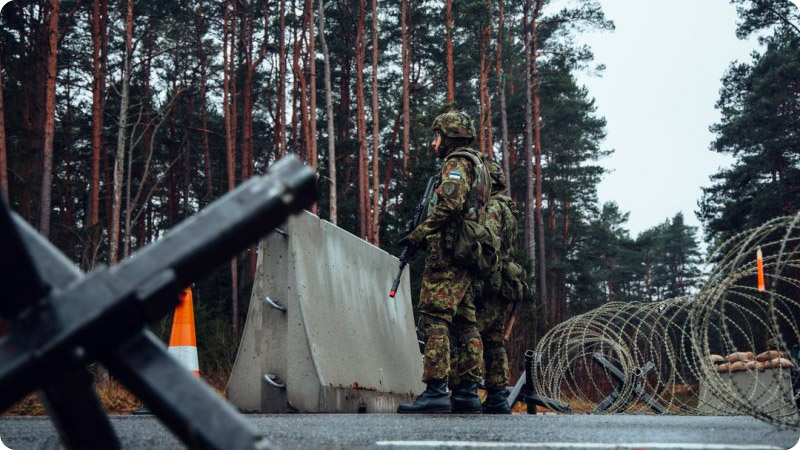
Paranoid Delusions grip Baltic States: NATO Members to Build ‘Concrete Bunkers’ on Russian Border
Keep up to Date & Bypass the Big Tech Censorship
Get uncensored news and updates, subscribe to our daily FREE newsletter!
Estonia announced on Friday that it intends to build hundreds of bunkers along its border with Russia. Fellow NATO members Latvia and Lithuania have signed on to the project as well.
Defense ministers of the three Baltic states met in Riga and approved the construction of what they called “anti-mobility defensive installations” on their eastern borders “to repel possible Russian aggression.”
“We are undertaking this effort so that the people of Estonia can feel safe,” said Estonian Defense Minister Hanno Pevkur. He added that the Ukraine conflict has shown that “in addition to equipment, ammunition and manpower, we also need physical defensive structures at the border.”
| Recommended Books [ see all ] | ||||
|---|---|---|---|---|
 |  |  |  |
 |
As part of the so-called “Baltic Defense Line,” Estonia pledged to build hundreds of concrete bunkers, each about 35 square meters in size and capable of housing 10 soldiers. They would be placed along the 294-kilometer border with Russia and linked with a network of support points and supply lines.
🛡️ The Baltic countries have agreed on the 🇪🇪🇱🇻🇱🇹 #BalticDefenceLine along their eastern border. It's crucial to use time wisely to increase #defence readiness. #NotAnInch pic.twitter.com/PDcSqxtAh7
— MoD Estonia (@MoD_Estonia) January 19, 2024
Landmines, razor wire and “dragon’s teeth” anti-tank obstacles will be stored nearby so they can be quickly deployed in case they are needed, Kaido Tiitus, an aide at the Defense Ministry, told the state broadcaster ERR. The bunkers reportedly need to be able to survive a direct hit from a 152mm artillery shell.
The initial budget for the program is €60 million ($65 million). Construction is supposed to begin in early 2025. According to Tiitus, the most difficult part of the process will be buying the land that is currently privately held.
“There is a big question mark over selling land in south-east Estonia, for example, because people there do not want to sell land, the land is important to them, whether it has some kind of traditional value or whether it’s purely farmland that keeps people’s souls alive in that far corner of the country,” he said.
The Estonian Defense Ministry has estimated that around 600 bunkers will be necessary for the project, according to the outlet Postimees. Tiitus said the fortifications would “not be designed as eyesores or to disrupt everyday life.”
Border fortifications have had a controversial history in Europe since France’s Maginot Line, built between the world wars to defend the border with Germany. Nazi armies ended up going around the series of concrete bunkers and gun emplacements, defeating the French in just six weeks.
Albania’s Communist leader Enver Hoxha had more than 750,000 concrete bunkers built around the country between 1967 and 1986, to fortify against possible invasions from both NATO and the Soviet bloc that never materialized.


